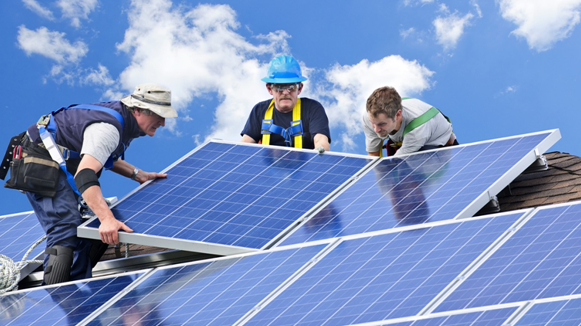Solar energy is one of the most popular and important solutions compared with fossil energy sources. At the same time, it reached three million households across the US, while one-third has been built in the last few years. At the same time, solar companies are increasing annually, which makes this aspect one of the best solutions ever.
Therefore, it pays off to handle different aspects of the solar energy system, especially if you wish to distinguish between polycrystalline and monocrystalline solar panels. Expense, efficiency, and durability will determine the choice.
Let us start from the beginning.
What is a Solar Panel?

We can differentiate two types, including photovoltaic and thermal. Thermal options will generate sunlight and produce heat as a result. On the other hand, photovoltaic options can capture energy from the sun and convert it into power or electricity.
At the same time, photovoltaic panels are one of the most popular solutions for household owners, especially if you wish to use them for residential purposes. Although they are less efficient than thermal ones, they can provide you the ability to store power, resell it into the grid or use it after a blackout.
A solar panel is rectangular, similar toa large picture frame with metal around it and protective glass in front. We can differentiate a few lawyers, while the most important one features a matrix of cells. Each panel features between thirty-two and ninety-six solar cells arranged inside, while they are wired together to output between 230 and 275 watts.
They can be either polycrystalline or monocrystalline, depending on the significance and other factors too. The options can more effectively harness sun rays. However, others are less expensive and perfect for areas with high sunlight days.
1. Monocrystalline Panels
Monocrystalline panels come from mono cells, meaning each one features a silicon crystal that can grow properly for creating efficient options. They should grow it within the cylindrical log shape option we can call ingot and slice them into discs. Each disc is an octagon, which is important to remember.
When placing the solar cells onto the panel, the octagonal shapes will help them to fit a max-number of cells within the ray. You can use tightly spaced options, which will feature spaces between them, while octagonal options will be tight together compared with round ones.
They feature black color, meaning they will offer you a significant efficiency that can go between fifteen and twenty percent. Of course, you can find experimental models that can go up to fifty percent, but they are not for the general population.
Solar panels are perfect for limited space areas since they will provide you with more electricity in less time. Therefore, they are perfect in case you wish to reach the max efficiency.
2. Polycrystalline Panels
When it comes to polycrystalline, they feature individual solar cells. Similarly, as others, they come from silicon. The main difference is that they do not come in a single ingot but feature crystal fragments and cools. They melt the fragments to form cubes they can cut into wafers.
Therefore, numerous options will form this amalgaminstead of a single crystal, as in the first option. It is less-exhausting production, meaning they can produce more of them in less time, making them more affordable in the long run.
They feature blue-colored squares that fit side by side, and they do not feature space between the cells. Of course, they are less efficient than panels due to melted silicon features low effectiveness than other options. At the same time, melted fragments afford less room for electrons to move freely.
Polycrystalline panels feature efficiency between thirteen and sixteen percent, which is a few percent lower. The differences are more significant in case you have numerous panels. The main idea is to take advantage of a proper solar module that will provide you with high efficiency throughout the year.
You should remember panels are perfect because they are more affordable and offer you better value in the long run. Still, you will need enough space for them. They are perfect for areas that feature high sunlight since they will offer you lower wattage than other options.

